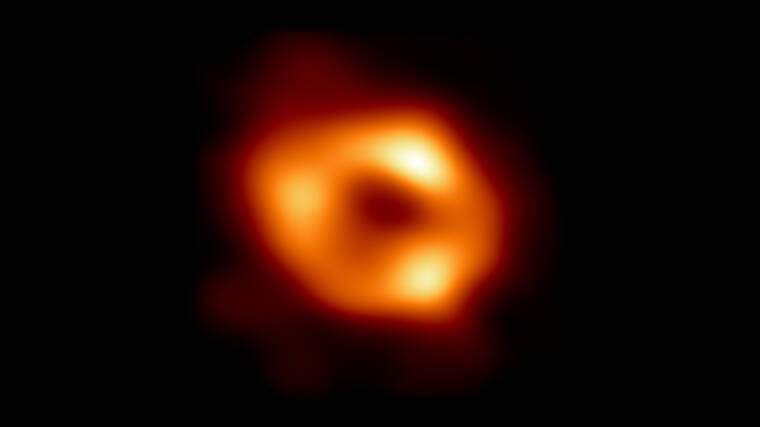A global team of scientists, including astronomers at a pair of Maunakea Observatories, have captured the first image of the black hole at the center of the Milky Way.
The supermassive black hole, about 27,000 light-years from Earth, was imaged using the combined efforts of eight radio observatories around the world, including the James Clerk Maxwell Telescope and the Submillimeter Array on Maunakea. The eight observatories, called the Event Horizon Telescope Collaboration, collectively formed an “Earth-sized” telescope capable of creating the image, according to a James Clerk Maxwell statement.
The EHT previously captured the first ever image of a black hole, named Powehi, in 2019.
Visually, the Milky Way black hole — called Sagittarius A* — is very similar, a blurry corona of superheated gas surrounding a shadowy singularity. However, Sagittarius A* is about 1,000 times smaller than Powehi.
“We have two completely different types of galaxies and two very different black hole masses, but close to the edge of these black holes they look amazingly similar,” said Sera Markoff, Co-Chair of the EHT Science Council and a professor of theoretical astrophysics at the University of Amsterdam, in a statement. “This tells us that general relativity governs these objects up close, and any differences we see further away must be due to differences in the material that surrounds the black holes.”
With two images of two different black holes, scientists have the chance to learn about how they behave and how they can influence the formation and evolution of galaxies.
“Now we can study the differences between these two supermassive black holes to gain valuable new clues about how this important process works,” said EHT scientist Keiichi Asada from the Taiwanese Academia Sinica Institute of Astronomy and Astrophysics, in a statement. “We have images for two black holes — one at the large end and one at the small end of supermassive black holes in the Universe — so we can go a lot further in testing how gravity behaves in these extreme environments than ever before.”

